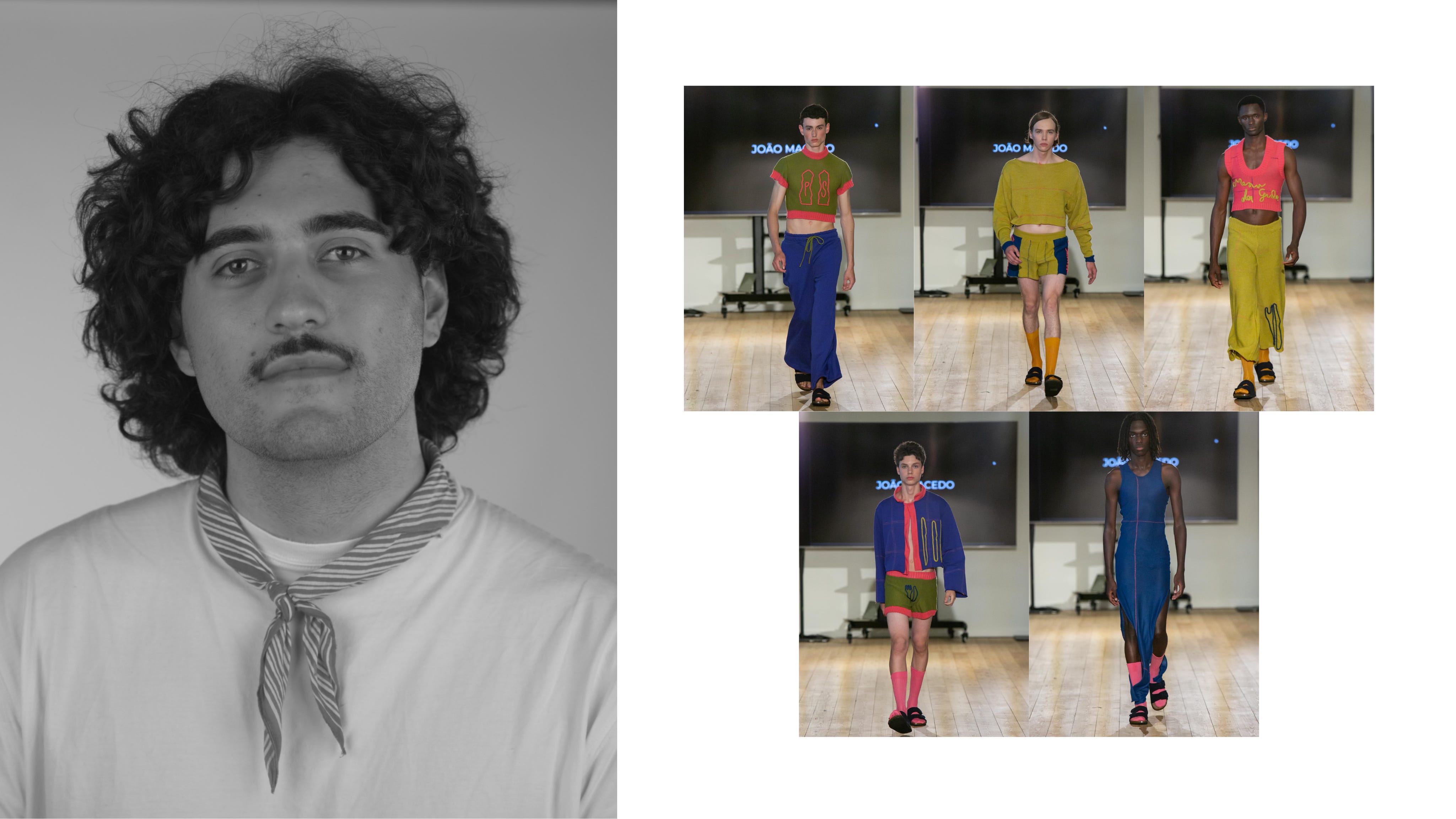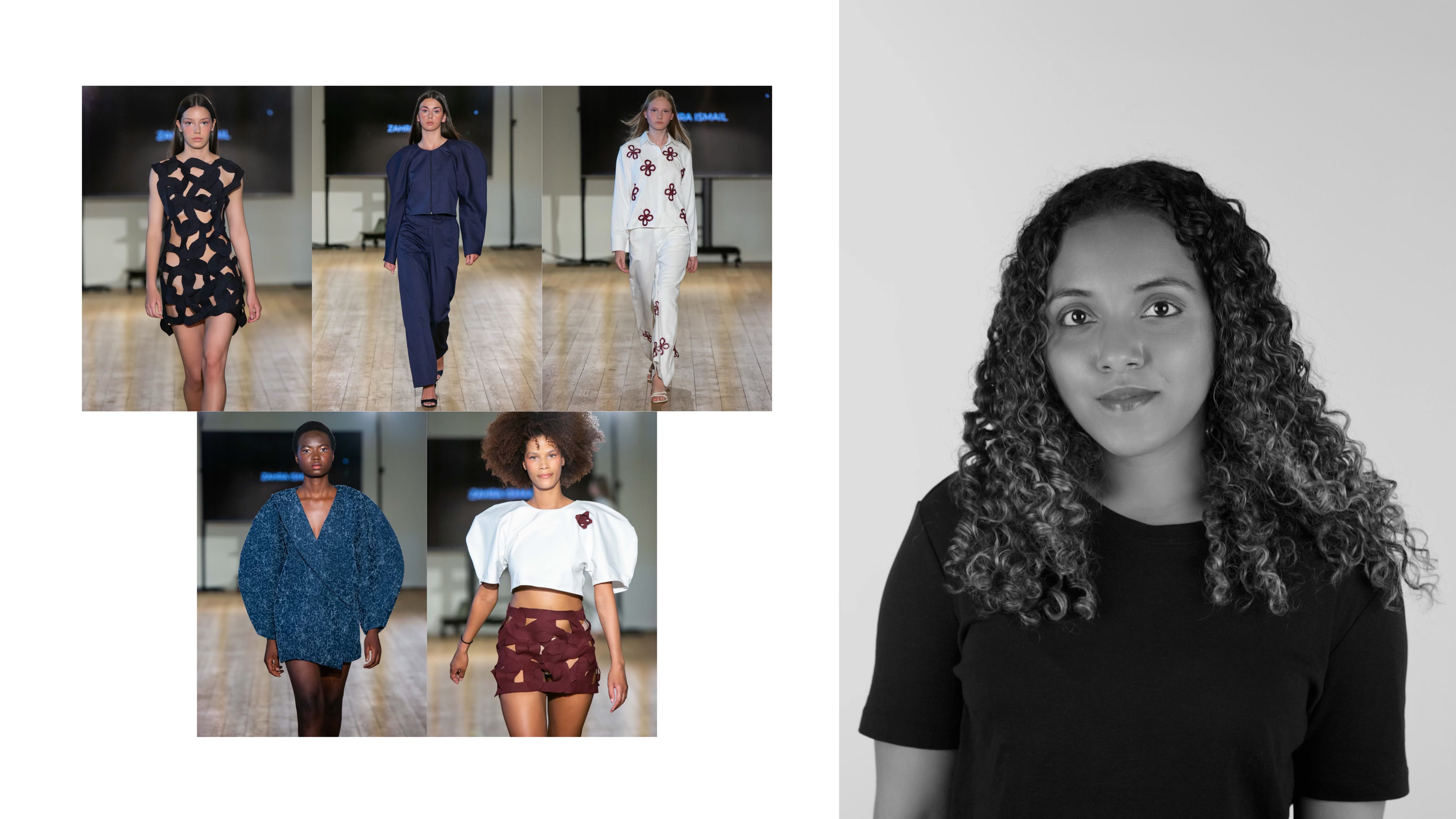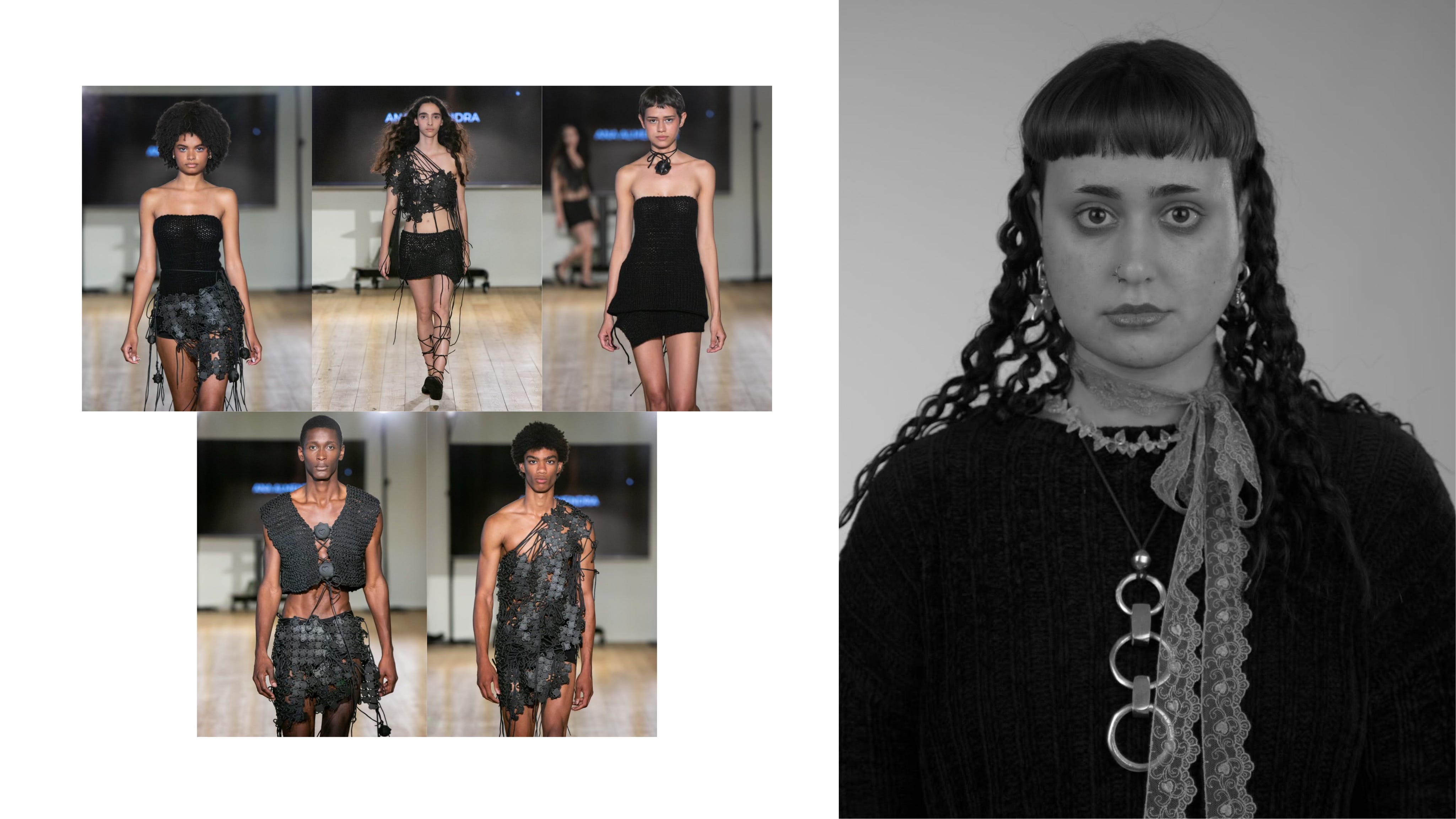Warning: you may become highly inspired by the protagonists of this writing.
About this essay: this essay consists of two parts and a final cut. Regardless of order, the entire essay should be read. The context becomes more perceptible when read in chronological order according to publication.
Continuation of part one
Sofia Soto
To be a Latin American woman, "Suerte" is something you have to take into account at all times. "Suerte" is represented in a collection for Fall/Winter '26. Transforming this intangible element like luck into a collection is not just an academic project - it's resistance!
"Being a migrant woman who studies, works, lives and still finds time to have fun requires at least 48 hours a day. Despite this energy demand, I enjoyed seeing myself in full creation. Observing my own process through deep reflections touched several layers of my humanity."
A personal project that allows her to return to her roots, tell stories through textiles, as an artisanal, political, emotional act... This is what Sofia hopes Luck will bring her. It is not, however, a vain hope or, much less, one of inertia. She works with her hands and heart, this being her political statement.
What is luck for Sofia? It was a question that led the young designer down an introspective and intuitive path that was reflected in worn pieces, in Fashion in movement. Keeping in mind that for many women, namely in the Global South, where basic rights are not guaranteed, trusting in faith is an emotional survival tool.
João Macedo
Menu of Gluttony - Metaphor of a set table, dishes, cutlery and food - symbols of excess and provocation, strategically positioned on the body as a form of confrontation and irony is the first ingredient of João's recipe.
He counted on a good dose of inspiration: the color palette and irreverent spirit of Keith Haring and the discursive perspective of Oliviero Toscani - Fashion as a means of denunciation.
Questioning, personal restlessness: how do we dress in an era of excess, political regression and erasure of individuality? And the answer emerges at a moment when fashion needs, according to the designer, to have more intention.
For him, the process tasted like enthusiasm with the class, creative exchanges during breaks, moments of frustration, lots of gossip and even some tears. Bittersweet, though more sweet than bitter, since it's demanding but deeply rewarding.
The dessert was an adrenaline crash from the unique happiness of the fashion show followed by nostalgia.
"For me, fashion (...) is a powerful tool for expression, social criticism and transformation."
How does he intend to knead his future? Living in Paris, a city that has always inspired him, having as one of his main goals to do an internship at the brand and with designer Marine Serre. He intends to consolidate his knowledge and build a solid foundation, both technical and conceptual - whether with his own brand or as creative director.
Zahra Ismail
Emotional journey of human identity, from the simplicity of childhood to the complexity of adulthood, passing through the chaos of adolescence. In the adult phase, in Zahra's understanding, we make peace with life's tears that formulate human resilience.
The introspection of her life and her self, the deep self - not only the young woman who works in communication sciences, but also the young Mozambican who changes cities, countries and continents, again, with the motivation to achieve another dream.
"What I did, the collection I presented, is a collection I'm very proud of, because six months ago, I couldn't imagine I would be able to sew all that, that I would be able to make those pieces, because I didn't know how to do it. But it was very rewarding."
Not being from Fashion was quite challenging for the designer, with manual embroidery finished until the last moment and done for hours on end. She sought solutions that would optimize the process and fill in what she still didn't know, creating a base pattern that would allow her to make small alterations and enable the unfolding into several pieces.
Being fully aware that the more complex pieces she made in draping might have been more easily achieved if she had done them through flat pattern making.
Three years from now she wants to be taking the first steps in her own Fashion brand, which is not just a business, but also activist and allows her to receive those who, like Zahra, want to learn.
Talmo Vaz
"(...) in that conversation with professor Eduarda, I remember there was a word I had forgotten (...) she said: the collection was very sophisticated, the collection was elegant. And when she said that, hearing that from Eduarda, I really broke down crying. (...) it was from happiness, you know?"
Before we begin the question script, since we had a meeting, Talmo shared his story with me.
Despite having already graduated in Fashion Design in Brazil and already having a small team and an atelier beginning to establish itself, to grow he had to relocate... Maybe moving to São Paulo, but his dream was European Fashion.
In Europe, in Lisbon, he learns more with humility, there being a Talmo before and a Talmo after this process - much more capable and multifaceted in terms of Fashion Design.
In "That's Life", the designer draws inspiration from love for his grandmother, now deceased, an embroiderer who gave independence to many women by teaching them her art.
Upon hearing a story told by the professor about the reference box that a model and friend of John Galliano prepared for this iconic designer, Talmo had an idea.
The designer's grandmother, whose craft fascinated him and who wouldn't allow her grandson to learn as a child, had left a box. A box full of embroidery of various sizes that became one of the foundations of his collection - embroidery that shaped a top in the collection.
Also drawing inspiration from Haute Couture, from Cristóbal Balenciaga and a technique this couturier used: the ma - a Japanese concept that designates the space between the body and the garment.
Now with everything he has learned and grown, Ramilton Talmo wants to catalyze and boost his brand - Talmo Vaz.
Ana Almendra
Enxúvia, as a word, refers to traces, shells or abandoned skins, often associated with the metamorphosis process of animals' exoskeletons in nature.
Now, Enxúvia, Ana Almendra's collection, explores the traces that we, as human beings, leave with what we wear. Traces that expose personality traits and affirm the beliefs and civilizational origins of each individual.
"(...) led me to analyze the work of various fashion designers, focusing on the works of Valentim Quaresma, a Portuguese designer whose artistic journey stands out for the use of sculptural accessories and unconventional materials, often associated with the warlike and ceremonial universe, which evoke an aesthetic of strength and shelter."
Here clothing assumes itself as a shelter and an extension of the body, silently carrying the marks of an exhausting inner battle. A collection where it predominates as a symbol of introspection, fear and contained strength.
Despite insecurities, she remained faithful to her initial plan, even aspiring to achieve "perfect craftsmanship." In a process where manual and technological work demanded a lot of time, a lot of time between the beauty of manual knit imperfection and the extreme precision of printing.
She felt the day of the fashion show as being as magical as it was frightening, having been the exact moment the first time she felt truly proud of her work, it was there that insecurities dissipated. Missing the routine, the designer began to focus on another project, other personal projects, right after the show.
Ana wishes and hopes to dedicate her future to jewelry and accessories, even though she has a vague idea.
Élio Ramos
He doesn't know where he'll be in the future, but hopes to be doing what he loves, provoking through clothing in the form of Fashion.
Fashion that, with colleagues, he discovered is a place of mutual help and fits of laughter derived from felt exhaustion, but which has a happy ending.
How does Élio provoke? LUBE was just the first chapter of this provocative liberation. Inspired by childhood, especially by his parents' workshop... In the midst of the noise of tools, the smell of burnt oil and work clothes always dirty and worn.
What marked the designer were the calendars hung on the walls, with semi-nude women in provocative poses, as if they were part of the decoration. The idea of the difference in bodies according to gender remained in his mind - the woman's body was almost decorative - being looked at and desired, the man's had the function of working.
"This collection touches parts of my story, the way I grew up seeing the world and questioning my place in it. Working those memories, putting them into pieces, was almost therapeutic."
Thus, starting by deconstructing the work uniform as a symbol of raw masculinity, he showed the male body as decorated, desirable and strong at the same time. Even assuming and almost celebrating the appearance of the butt crack, which so often appears involuntarily in the workshop.
(Continues...)
The third and final part will be published soon on the website and sent by email.
Find the final cut in your email or on the website.











